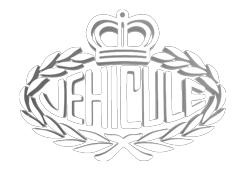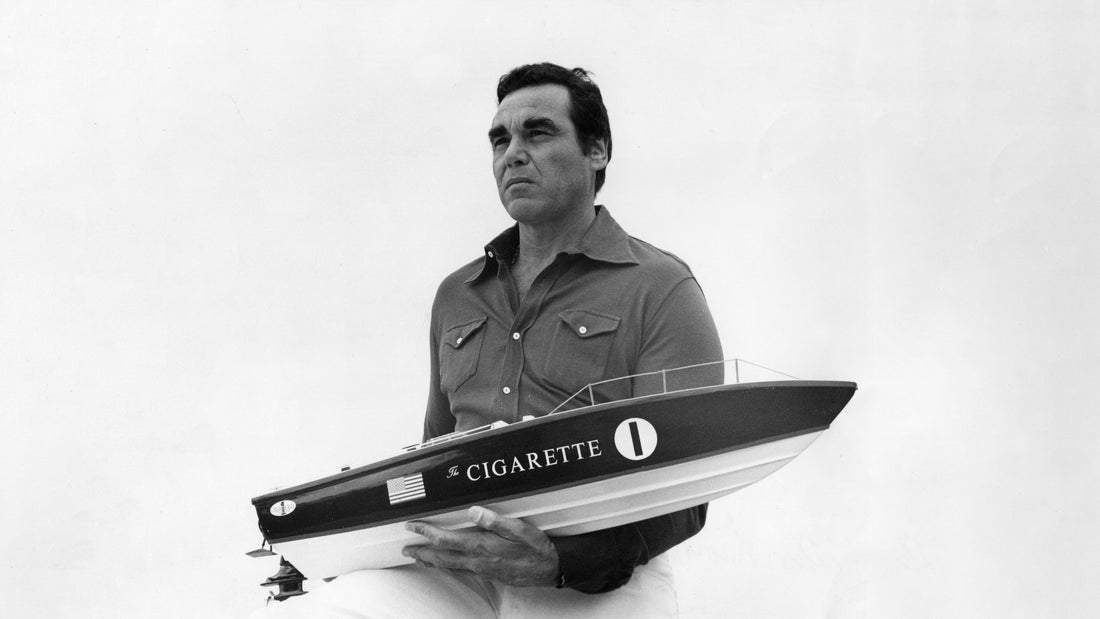The 1987 murder of Miami powerboat legend Don Aronow captivated the international boating scene. The case’s twists, turns and seemingly never-ending cast of characters leaves the killing a mystery to this day. People have tried to make sense of it, only productions misinformation along the way.
VÉHICULE’s in-depth exposé clears the air around the case, bringing you just the facts and illuminates some of the Miami scene’s most prominent characters and places, including Ben Kramer, Rocky Aoki, Betty Cook and the famed Fort Apache.
Excerpt from Paradise Lost: The Rise and Fall of Ben Kramer. Read the full story in the VÉHICULE print edition.
Life for Donald Joel Aronow was a series of loud, abrupt noises. The backfires of the junked Cadillacs that he used to flip in 1930s Brooklyn, the orders barked when he joined the Merchant Marines in the ‘40s, the crack of a hammer on a construction site in 1950s New Jersey, or the smacking of his boat’s fiberglass hull against rough midnight waters when he devoted himself to offshore powerboating in the ‘60s, ‘70s and ‘80s. Anything percussive or bodily jarring was his lifeblood. It’s what made him the world’s go-to man for all things loud, fast and buoyant, and it kept him in the industry’s pole position right up until the second he was fatally met by an assassin’s Felco-branded bullet on NE 188th Street, Miami, Florida just before 3:30 p.m. on Tuesday, February 3, 1987.
Don Aronow was a bona fide celebrity. He didn’t maintain an ostentatious profile, have an entourage or drive a Rolls-Royce (although he did own a few), but people knew who he was wherever he went. If they didn’t know him, his affable character, openness and magnetism would give his status away within seconds. His competitive nature knew no bounds, which, paired with his undeniable draw, made sure Aronow was rarely seen without a woman on his arm—even if it wasn’t his current wife. If he was missing a partner, he would have no trouble finding one. It was trophy hunting at its finest, and Don’s pride wouldn’t allow him to come back empty handed.
The company that he kept was larger than life, from white-knuckle boat rides with The Beatles to sustained friendships with the Kings of Spain and Jordan, Shah of Iran Mohammad Reza Pahlavi, Haitian dictator Jean-Claude “Baby Doc” Duvalier, and George H.W. Bush.
Aside from fostering physical attraction and comradery, his need to win manifested first and foremost as shrewd business sense, which he exercised throughout his boatbuilding endeavors. He wouldn’t beat around the bush, and he wouldn’t talk around the issue at hand. He was—or did a very good job at portraying himself as—transparent. His primary concern was getting the deal done as quickly and easily as possible. If you couldn’t make that happen, it was your loss. He never took a check—always wanted cash. If you needed a receipt, he’d write one up for you on a yellow sheet of paper ripped from a legal pad.
His reputation was ostensibly clean, at least when held up to those of his contemporaries, which made his daylight murder especially shocking. It was only posthumously that his image started to degrade, sullied by the torrent of rumors, accusations and facts that came out in the investigations that started the minute the murder weapon was fired.
At around 3:30 p.m. on February 3, 1987, after a short day at the office, Don was fatally shot in his white Mercedes-Benz R107 560 SL. It had the body-color hardtop, American-spec headlights and a front plate proudly displaying USA Racing’s crest. Its front wheels were pointed ever so slightly toward the edge of the road.
Six shots were fired from a Lincoln Town Car, either dark blue or black with a green bumper sticker on the back. It was probably a rental, as indicated by the Z in the license plate. Four of those shots ended up in Don. One ricocheted around the car before bouncing off of the Rolex that was presented to him by the company itself, while the other grazed his side and ended up on the floor mat.
He tensed as the life left his body, warm blood pooling around him like the tropical waters that he had become so acquainted with. His legs stiffened and jammed the Mercedes’ accelerator to the floor. The 5.6 liter V8 revved to its limiter and stayed there, letting out the scream that Don himself couldn’t. It was in neutral, not park—an odd gear to put an automatic transmission in—so the car didn’t move. An Apache employee was first on the scene and shut the ignition off.
Don’s breathing was labored. He had been through countless near-death experiences, but nothing had been like this. You don’t need to know what death feels like to know that it’s right around the corner.
Maybe he was at peace knowing that he had started simplifying his life. He knew this day would come eventually, in one way or another, so his affairs were in relative order. The few companies that he still owned were to be liquidated within a year of his death, per his wishes. Maybe he was thinking about the 60th birthday that he would never have. It was only a month away. Maybe he felt anger—at himself for not thinking more of the hang-up calls that had been coming in at his house over the past few weeks, or at his foes for going so far with their revenge. Or maybe, in his final breaths, Don was pondering his legacy—the legacy that he had so carefully been building over the years. Maybe he would be thought of as a hero. He had a good run.
Read all about the real story of Don Aronow, founder of Magnum Marine, Cigarette, Donzi and Formula (amongst others) in the 30 page VÉHICULE print edition feature story. Order here.





